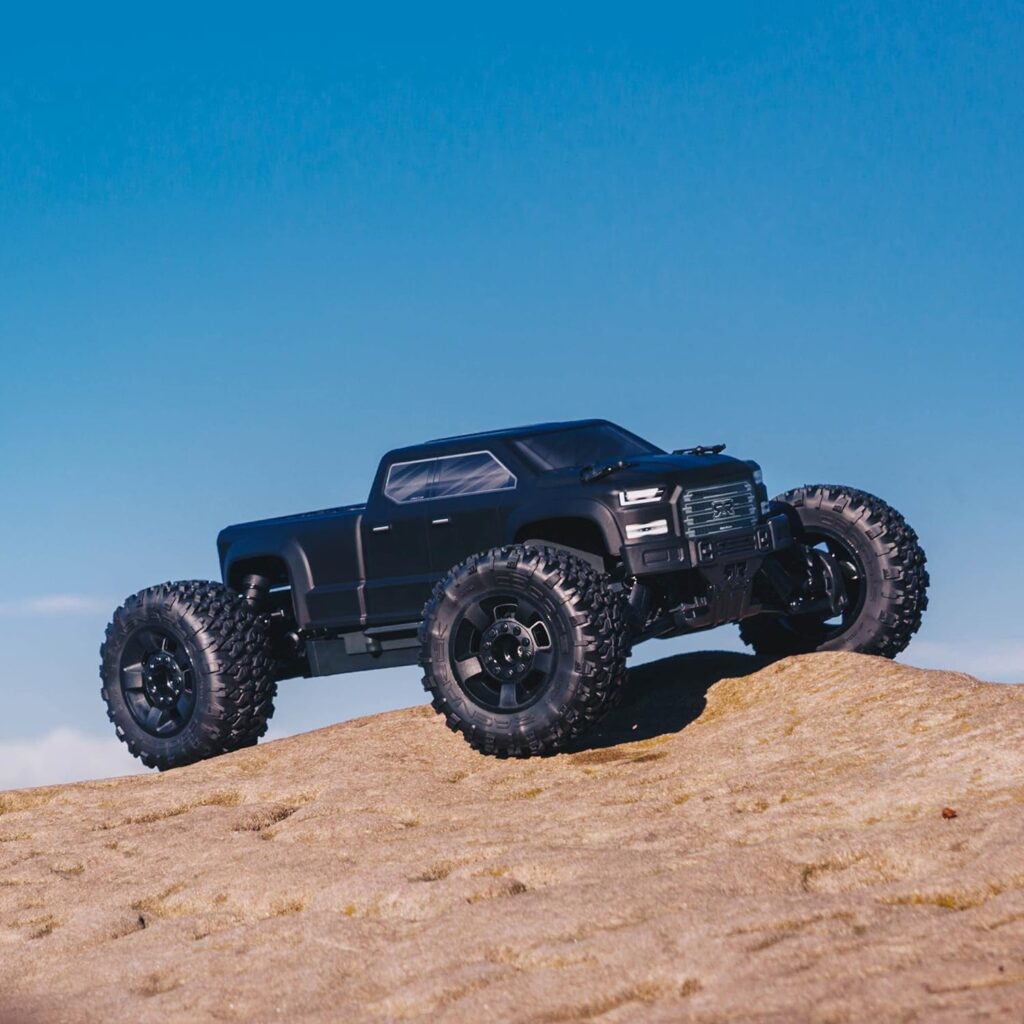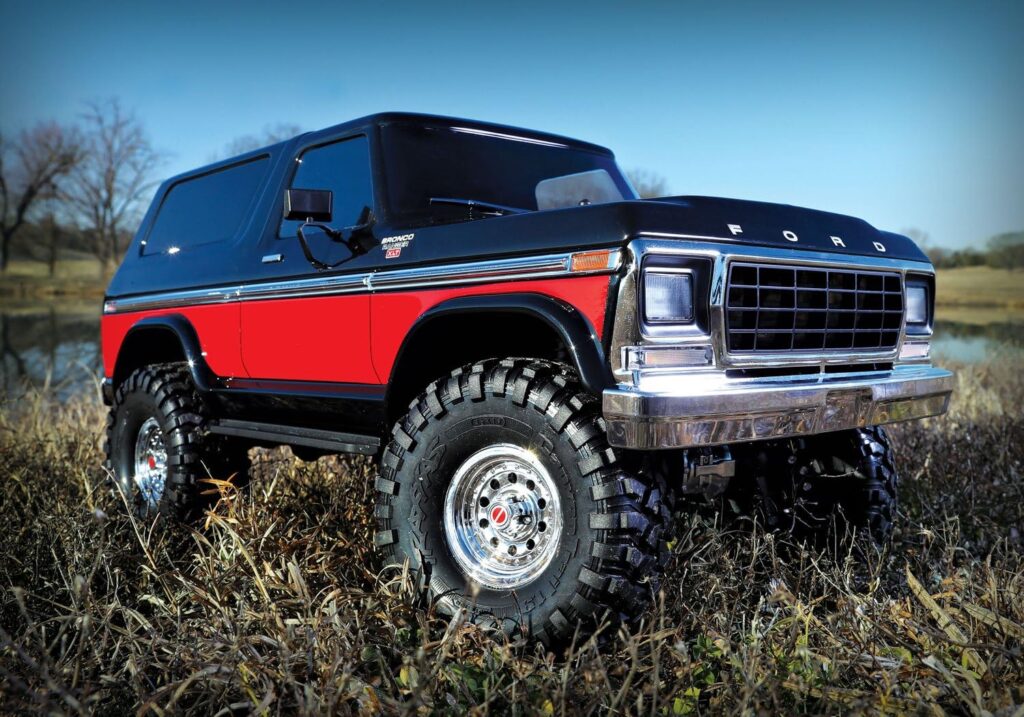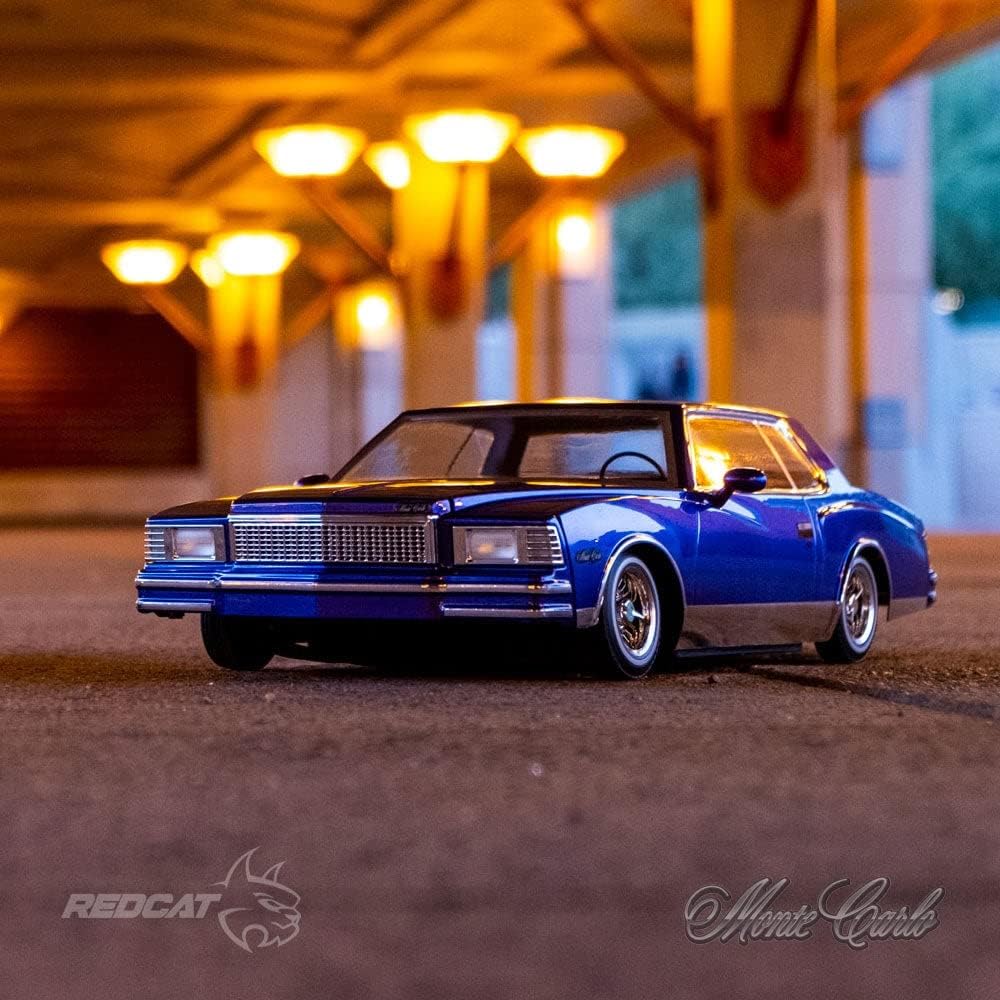Radio controlled (RC) cars are model cars that are controlled remotely using a handheld radio transmitter. These hobby-grade models come in a variety of scales, representing the ratio of the size of the model to the actual full-size car. One of the most popular scales for RC cars is 1/10 scale.
The scale of an RC car refers to how much smaller the model is compared to the real life car it replicates. For example, a 1/10 scale car is precisely 1/10th the size of the actual car. So if the real car is 180 inches long, the 1/10 scale model will be 18 inches long. This scaled down size makes the RC car small enough to be easily transported and managed, while still large enough to hand realistic detail and performance.
Scales smaller than 1/10, such as 1/18 or 1/24, are very small and harder to work on. They sacrifice detail for micro size. Scales larger than 1/10 like 1/8 and 1/5 can get very large and expensive. 1/10 hits a nice balance – suitable size for most environments, able to incorporate good detail, and maintaining reasonable cost. For these reasons, 1/10 scale has become the most common size class for RC enthusiasts looking for well-rounded hobby-grade models.

What is the Size of a 1/10 Scale RC Car?
As the name implies, a 1/10 scale RC car is precisely 1/10th the size of the actual full-size car it replicates. This means that a model that is patterned after a real car with dimensions of 180 x 72 x 50 inches would have the following approximate dimensions as a 1/10 scale:
- Length: 15-17 inches
- Width: 6-8 inches
- Height: 4-6 inches
Of course, dimensions can vary slightly depending on the design and styling of the specific model. But in general, 1/10 scale RC cars are around 1 foot to 1.5 feet long and 6 to 8 inches wide. Their small statures enable them to be easily transported and stored, while still large enough to handle well.
List of the Best 1/10 Scale RC Cars
Comparing 1/10 Scale RC Car to Other Common Scales
While 1/10 is the most popular RC scale, other size classes are also used. Some other frequently seen scales include 1/8, 1/16, and 1/24 scale. The larger the denominator in the scale, the bigger the model size.
A 1/8 scale RC car is around 1/8 the size of the real car, making it nearly twice as large as a 1/10 scale model. A typical 1/8 buggy can have dimensions around 24 inches long, 10 inches wide, and 8 inches tall. The increased size allows for more detailed features and visual impact, but also increases weight and cost.
On the other end, smaller scales like 1/16 and 1/24 are frequently used for mini RC cars. A 1/16 scale buggy may only be 9-10 inches long – less than half the size of a 1/10 version. While great for indoor use and lower budgets, these tiny scales can sacrifice performance and are challenging to work on.
1/10 hits a versatile middle ground between the micro sizes and the giant scales. The models are big enough to incorporate good detail and performance, yet small enough to transport with ease and keep costs down. Larger scales may offer more realism but become impractical for most hobbyists. Smaller scales can fit more places but aren’t as satisfying to run. For balancing size, handling, detail, and affordability, 1/10 remains the preferred choice for RC enthusiasts looking for an ideal all-around scale.

Advantages of 1/10 Scale RC Car
1. Ideal size for handling and working on:
At around 15 inches long, 1/10 scale RC cars are large enough to incorporate good detailing and performance, while still being easily managed and worked on. Larger scales become ungainly.
2. Balances size and control
The small size makes 1/10 scale models easy to control and drive in most environments. Larger scales can become unwieldy requiring more space.
3. Parts availability
Since 1/10 is the most popular scale, replacement parts are widely available. Less common scales may have limited parts support.
4. Cost effectiveness
Larger scales get very expensive. 1/10 models can deliver great detailing and function at reasonable costs for most hobbyists.
Disadvantages of 1/10 Scale RC Car
1. Small details can be challenging
Some fine details and proportions may be harder to accurately reproduce at small sizes. Larger scales can incorporate more realism.
2. Not as visually impressive
Though nicely detailed, 1/10 models still look small compared to giant 1/4 or 1/5 scale builds that really wow with imposing size.

Frequently Asked Questions about 1/10 Scale RC Cars
Q: How big are most 1/10 scale RC cars?
A: A typical 1/10 scale RC car is between 15 to 17 inches long and 6 to 8 inches wide. Height varies more depending on the vehicle style, but is usually between 4 to 6 inches tall. For example, a 1/10 scale RC trophy truck is around 16 inches long, 7 inches wide, and 5 inches tall.
Q: What are some examples of popular 1/10 scale RC cars?
A: Some of the most popular 1/10 scale RC cars include trophy trucks, buggies, short course trucks, and stadium trucks. Trophy trucks have high suspensions and big tires for simulated off-road racing. Buggies are lightweight and designed for high speed racing and jumping. Short course trucks emulate scaled down pro-level off-road race trucks. Stadium trucks are versatile for both racing and bashing.
Q: How does 1/10 scale compare to other common RC scales?
A: Other popular scales besides 1/10 are 1/8, 1/5, 1/6, and 1/4. 1/8 scale buggies get up to around 24 inches long – much larger than 1/10 scale. 1/5 can be over 3 feet long – great for realism but not as practical. Smaller micro scales like 1/24 might only be 5-6 inches long – fun for indoor use but not as satisfying. 1/10 hits the ideal middle ground.
Q: Why is 1/10 the most popular RC scale?
A: There are a few key advantages to 1/10 scale that make it the most popular choice. First, it’s a good manageable size – models fit easily in vehicles for transport. Second, there is a vast range of 1/10 scale bodies, parts, and hop-up options widely available. Third, 1/10 is large enough for good performance while still keeping costs reasonable for most hobbyists. Overall, it’s the best balance of size, customization, and affordability.
Q: What are the main downsides of 1/10 RC scale models?
A: The small size of 1/10 models does impose some limitations. Fine details can be difficult to reproduce compared to larger scales. Some enthusiasts also feel 1/10 lacks the imposing visual presence and realism of giant 1/4 or 1/5 scale builds. However, for most hobbyists, the pros of 1/10 far outweigh these minor shortcomings.
Final Thoughts
While no scale is perfect, 1/10 offers the best all-around combination of size, performance, detailing, cost, and compatibility for most RC enthusiasts. The popularity and proliferation of 1/10 scale models is a testament to its versatility as the RC scale of choice for a vast range of vehicles and environments.
Enjoyed this guide of How Big is 1/10 Scale RC Car? Then be sure to check out our other RC Rating guides.




